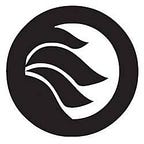By Caleb Savage
Dead Horse Bay has one of New York City’s more colorful place names. Located at the far southeast corner of Brooklyn by what used to be Barren Island, the bay is named for the horse-rendering plants (glue factories) that used to line its shores. These factories would dump the leftover horse bones into the bay, giving it its unusual name. Other types of foul-smelling industrial sites, like fish oil factories, also existed in the area until the 1920s.
At that time, Barren Island was separate from the mainland and home to about 1,500 people, mostly immigrants who worked in the rendering plants. By all accounts, it was a squalid place to live and work. People who grew up on Barren Island describe an impoverished community constantly shrouded by the stench of the factories and garbage. The last residents were evicted in the late 1930s by infamous city planner Robert Moses in order to make way for the Marine Parkway Bridge, which connects Brooklyn to the Rockaways.
In the 1920s the City of New York used landfill made of sand, coal, and garbage to connect Barren Island to the Brooklyn mainland, creating the space for Floyd Bennett Field (NYC’s first airport). Today, the landfill is slowly being eroded, releasing layers of 100-year old trash into Dead Horse Bay with every tide. The bulk of the trash that appears on the beach is glass jars, bottles, bits of metal, and shoe soles. Plastic materials were not common at the time that the garbage was deposited, and soft, organic materials have long since decayed. The bay is frequented by artists and crafters looking for bottles, glass fragments, and other oddities. Though a landfill slowly spilling into the bay seems like an environmental disaster, the City has no plans to clean it up.
South Brooklyn and the Rockaways, 1897 and today. Massive landfill projects joined Barren Island to the mainland to create Floyd Bennett Field, NYC’s first airport. Via David Rumsey Map Collection and Google Maps.
Dead Horse Bay is part of the Gateway National Recreation area, administered by the National Park Service. To get there, take the 2 or 5 train all the way to the end of the line at Flatbush Avenue/Brooklyn College and hop on the Q35 bus. Get off at Floyd Bennett field. There is an unmarked trail to the bay directly across the street from the main entrance to Floyd Bennett Field, just before the Marine Parkway Bridge. The path splits off into three routes, but any of them will get you to the beach.
If you want to make a day trip out of it, check out Fort Tilden, also accessible on the Q35 bus. It’s an abandoned military base which is now a public park. It has a very nice beach as well as lots of urban decay to explore, if that’s your cup of tea.
Some finds from an excursion to Dead Horse Bay. The top right photo is a possible horse bone.
People often come to Dead Horse Bay to scavenge for old bottles, pieces of glass, and other treasures from ancient trash.
Several derelict boats lie washed up on the beach.
Left: Dead Horse Bay lies in the shadow of the Gil Hodges Memorial Marine Parkway Bridge, which connects Brooklyn to the Rockaways. Right: A dead crab among the detritus at “Bottle Beach”
Left: Automotive parts are among the debris. Right: The most interesting bottles still have their original printing. The newest garbage at the bay is from the 1940's.
This fallen tree has been decorated with items found on the beach, forming an eerie work of collective sculpture.
For more images and context, check out Dead Horse Bay, a photo series by Tisch alum Evan Simon and Scouting NY’s excellent post on the subject.
All photos by the author.
